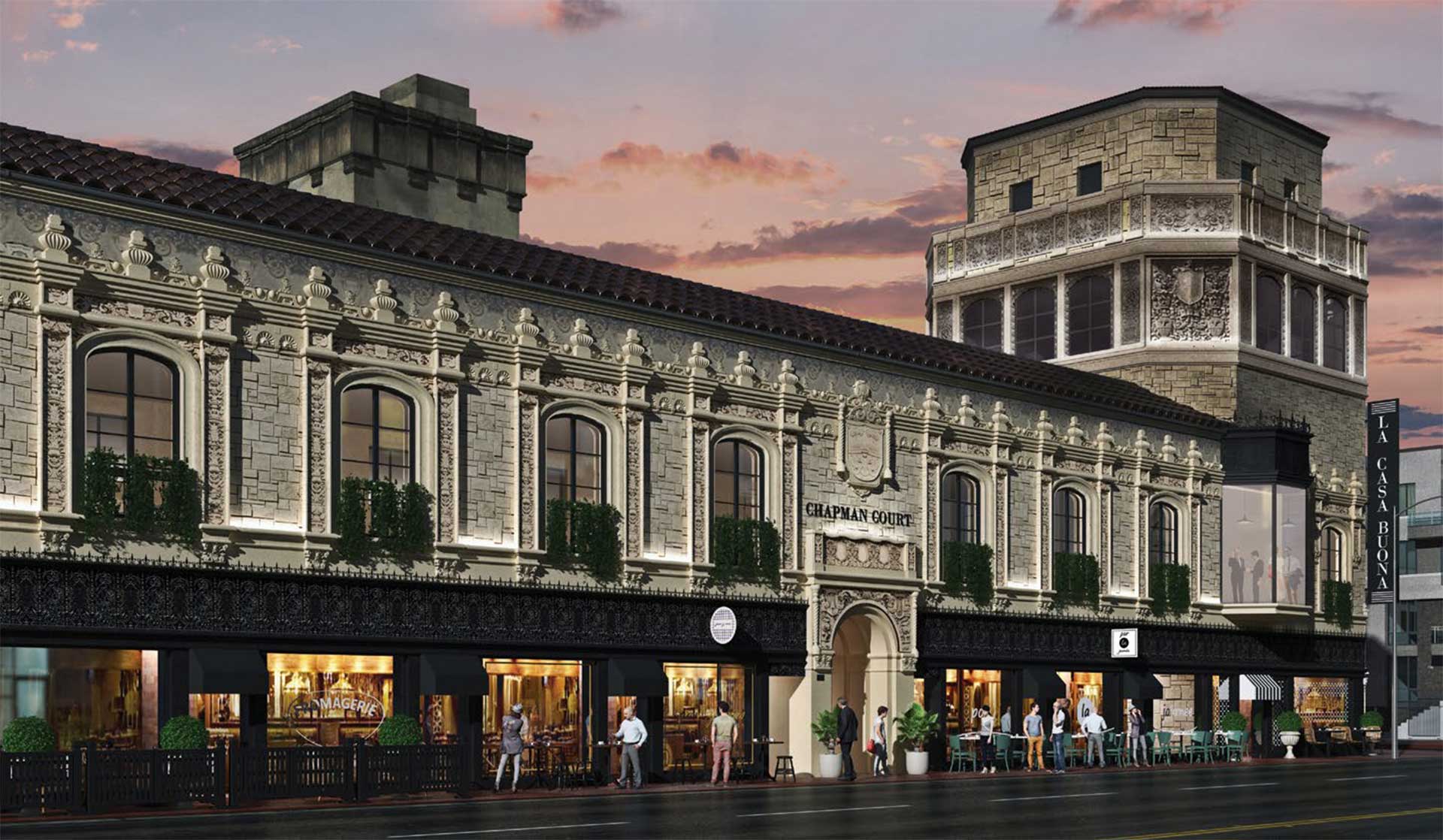Adaptive reuse of historic Spanish Baroque property will create unique retail and office spaces.
(Santa Monica, CA – September 27, 2018) Construction is underway on the adaptive reuse of Chapman Court, located at 3501 West 6th Street in Koreatown. The City of L.A.’s Cultural Heritage Commission designated the historic concrete building, designed in the ornate, late Spanish baroque style, as a Los Angeles monument in 1988. The owner of the building is The Chapman Court LLC, and it is being redeveloped into modern retail and office space.
Chapman Court will offer 45,000 square feet of creative office and retail space, providing an attractive enclave in the rapidly-growing urban center of Koreatown. Tenants and visitors will enjoy having the essentials of city life within walking or biking distance, and with the Metro Purple Line two blocks away connecting to Downtown LA and beyond.
“With Chapman Court, a historical street gets a fresh flavor, with dining and entertainment spaces in old school L.A. glamour and style. Being pioneers in the resurgence of the historic core in downtown Los Angeles in the late 1990s, KFA is proud to be a part of projects like Chapman Court that are happening outside of downtown,” said KFA Associate, Dganit Shtorch, AIA. “KFA designed the first buildings under LA’s Adaptive Reuse Ordinance in the Old Bank District and Downtown core. We have since rehabilitated more than 40 historic buildings throughout L.A., and are excited to be giving this unique building a new, long life,” she added.
Today, Koreatown is a growing hub of young creative residents drawn to the area for its vibrancy, walkability, and proximity to public transportation. This iconic building, with its 34’ tower and 20’ ceilings, flooded with natural light and skylights, is being transformed into a mix of restored spaces. When completed next year, Chapman Court will offer four enlarged retail spaces suitable for restaurants, and nine second-floor creative office spaces. The revitalized floor plans preserve Chapman Court’s historic context, and the courtyard will be restored for use by future retail and tenants. One of the many historical elements that will be preserved is the original barrel-vaulted ceiling of the arcade with its plaster and decorative stencil painting.

